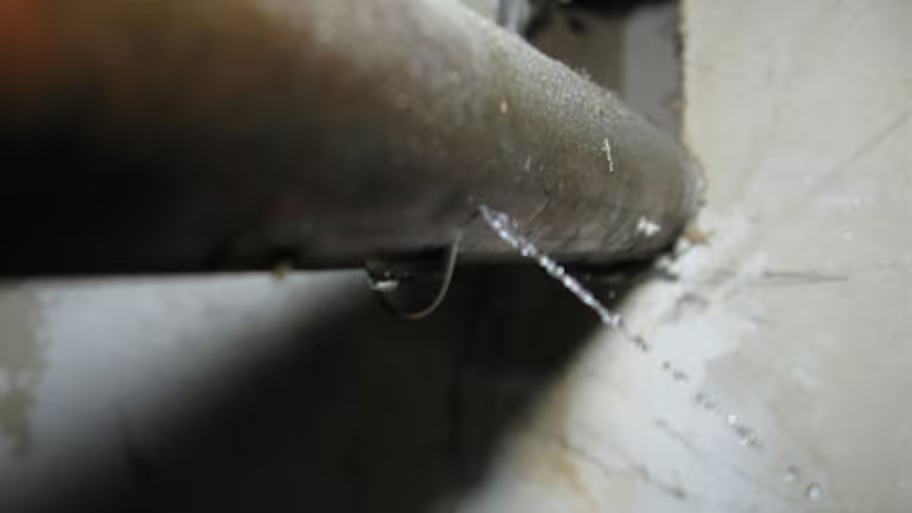Revealing the Main Origins of Leak Problems Inside Your House
Revealing the Main Origins of Leak Problems Inside Your House
Blog Article
Each person may have their private assumption about How to detect water leaks in your home.

Leakages not only cause waste of water however can likewise create unnecessary damages to your home as well as advertise undesirable organic development. Unfortunately, water leaks may go unnoticed since the majority of the pipework in our residence is concealed. By looking and recognizing for daily circumstances that create leaks, you can protect your home from future leaks and unnecessary damages. Today, we will certainly take a look at 6 leakage creates that may be triggering your pipelines to trickle.
Elbowing in origins
Many water leakages start outside the house instead than inside it. You may notice damp spots or sinkholes in your lawn, and also that might indicate that tree origins are invading water lines triggering water to seep out.
Corroded water systems
As time goes by, your plumbing system ages and also deterioration such as corrosion might begin gnawing the pipelines. This may be the source of discoloration or bending on your water pipes. This calls for an examination with your plumber instantly. If our plumbing system is old, consider changing the pipes since they are at a greater risk of corrosion than the newer designs.
Malfunctioning Pipe Joints
The point at which your pipelines connect is regularly the weakest web link in the waterline. Pipeline joints can weaken over time, causing water leakages. Unfortunately, the majority of pipe joints are not conveniently noticeable. If you have noisy pipelines that make ticking or banging sounds, specifically when the hot water is turned on, your pipeline joints are probably under a great deal of stress. It is a good idea to have your plumber examine your system yearly.
Instantaneous temperature modifications.
Severe temperature modifications in our pipelines can cause them to expand and get suddenly. This growth and contraction may trigger splits in the pipes, especially if the temperature level are below freezing. If you kept an eye on just how your plumbing works, it would be best. The visibility of the formerly discussed scenarios frequently suggests a high threat.
Poor Water Connectors
Sometimes, a leakage can be brought on by loose pipes and also pipelines that supply your appliances. Typically, shifting is what causes the loose water Connections. You might locate when it comes to a cleaning equipment, a pipe might spring a leak as a result of shaking throughout the spin cycle. In case of a water links leakage, you may see water running directly from the supply line or puddles around your devices.
Obstructed Drains
Clogged drains may be aggravating as well as inconveniencing, however they can occasionally end up triggering an overflow bring about burst pipes. Keep removing any kind of products that might decrease your drains pipes that can clog them to stay clear of such hassles.
All the above are causes of leakages but not all water leaks result from plumbing leaks; some leaks could come from roof covering leaks. All leaks must be fixed right away to stay clear of water damages.
Leaks not just trigger waste of water however can likewise create unnecessary damage to your home as well as promote undesirable organic development. By understanding and also looking for everyday circumstances that cause leakages, you can protect your house from future leakages as well as unneeded damages. Today, we will look at 6 leak creates that might be causing your pipes to trickle.
At times, a leakage can be triggered by loosened hoses and pipelines that supply your devices. In case of a water links leakage, you might observe water running straight from the supply line or puddles around your appliances.
How To Check For Water Leak In Your Home
How To Check for Leaks
The average household's leaks can account for nearly 10,000 gallons of water wasted every year and ten percent of homes have leaks that waste 90 gallons or more per day. Common types of leaks found in the home are worn toilet flappers, dripping faucets, and other leaking valves. These types of leaks are often easy to fix, requiring only a few tools and hardware that can pay for themselves in water savings. Fixing easily corrected household water leaks can save homeowners about 10 percent on their water bills.
To check for leaks in your home, you first need to determine whether you're wasting water and then identify the source of the leak. Here are some tips for finding leaks:
Take a look at your water usage during a colder month, such as January or February. If a family of four exceeds 12,000 gallons per month, there are serious leaks.
Check your water meter before and after a two-hour period when no water is being used. If the meter changes at all, you probably have a leak.
Identify toilet leaks by placing a drop of food coloring in the toilet tank. If any color shows up in the bowl after 10 minutes, you have a leak. (Be sure to flush immediately after the experiment to avoid staining the tank.)
Examine faucet gaskets and pipe fittings for any water on the outside of the pipe to check for surface leaks.
Undetected water leaks can happen without the home or business owner even realizing. If you suspect a water leak, but not able to find the source. It is time to contact a professional water leak detection service, The Leak Doctor.
How To Find a Water Leak In Your Home
https://www.leakdoctor.com/blog/How-To-Check-For-Water-Leak-In-Your-Home_AE197.html

I was made aware of that write-up about How to Find Water Leaks through a good friend on another web blog. In case you enjoyed our blog posting kindly make sure you remember to pass it around. We take joy in reading our article about How to Find Water Leaks.
Contact for quality! Report this page